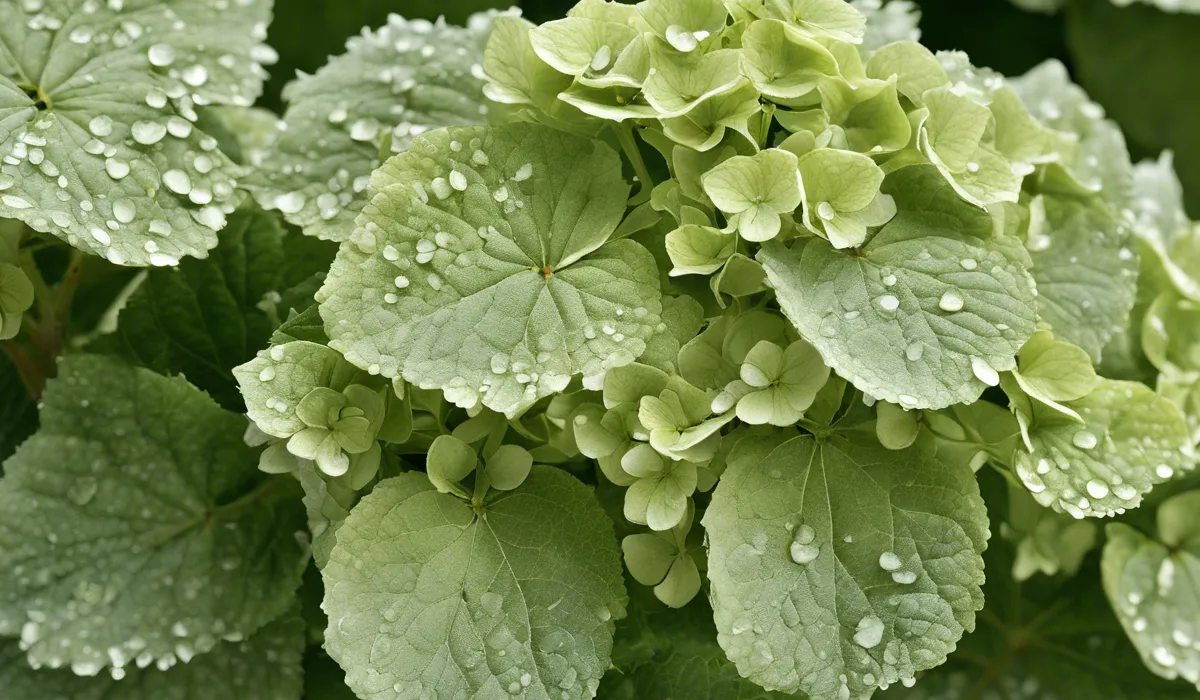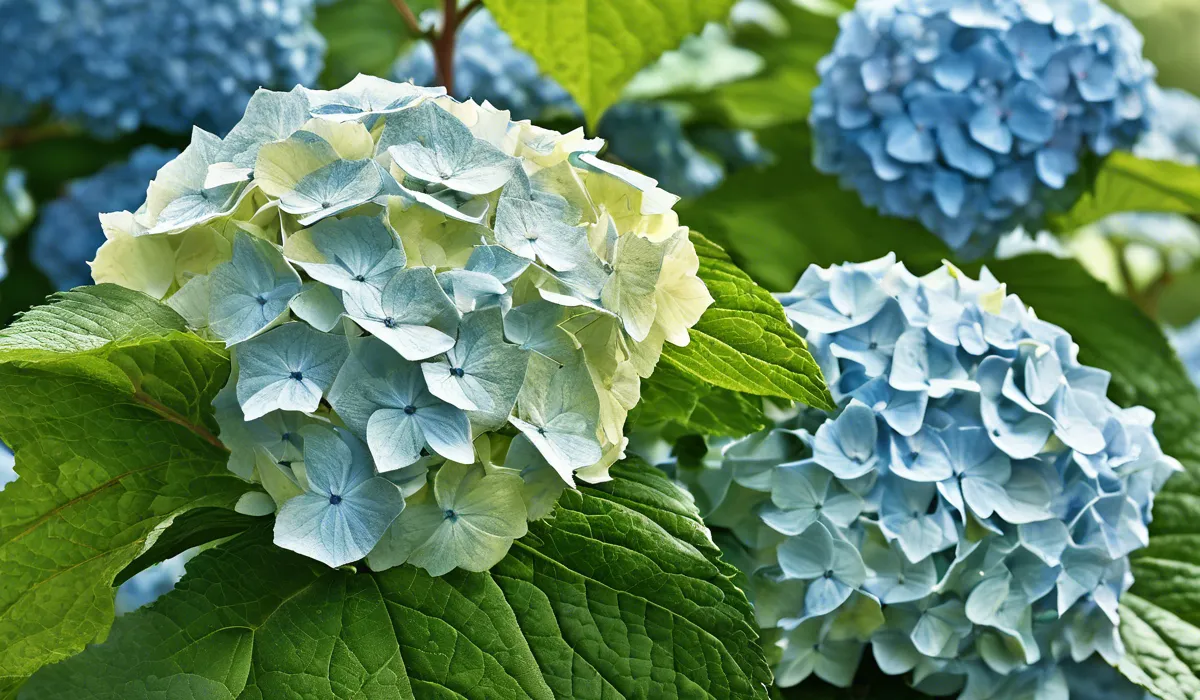To treat powdery mildew on hydrangeas, remove affected leaves, improve air circulation by thinning the plant, and apply a fungicide specifically designed for powdery mildew. Ensure the plant receives adequate sunlight and avoid overhead watering to reduce humidity.
Identification and Understanding Powdery Mildew on Hydrangeas

Description of Powdery Mildew
Powdery mildew is a common fungal disease that affects a wide variety of plants, including the beautiful hydrangea.
This fungus creates a distinctive white or gray powdery coating on the leaves and stems of the plant.
It can quickly spread, covering large areas and reducing the plant’s vigor, as well as its aesthetic appeal.
Signs and Symptoms on Hydrangeas
Hydrangeas with powdery mildew exhibit several telltale signs. Initially, you might notice small, powdery white spots on the upper surfaces of the leaves.
As the disease progresses, these spots can expand, covering entire leaves. In severe cases, the leaves may turn brown and dry, with the powdery mildew eventually affecting the flower buds and blooms.
Lifecycle and Conditions That Favor Powdery Mildew Growth
Powdery mildew thrives in warm, dry climates with high humidity, especially when the plants are shaded and have poor air circulation.
This fungal disease can overwinter on plant debris, releasing spores in the springtime that infect new growth.
A continuous cycle of infection can occur if conditions remain favorable throughout the growing season.
Preventative Measures to Protect Hydrangeas

Selection of Resistant Hydrangea Varieties
Choosing hydrangea varieties that are known to be resistant to powdery mildew is the first line of defense.
These breeds have been developed to withstand fungal attacks, reducing the need for extensive treatments down the line.
Proper Planting Location and Spacing for Air Circulation
Plant hydrangeas in a location that receives ample sunlight and has good air movement.
Space them adequately apart from other plants to ensure that air can freely circulate around the foliage, which helps to keep the leaves dry and less hospitable to fungal growth.
Watering Techniques to Minimize Leaf Wetness
Water hydrangeas at the base to avoid wetting the leaves, which can foster the development of powdery mildew.
Early morning watering is best as it allows any accidental splashes on the leaves to dry out quickly in the sun.
Regular Pruning to Promote Healthy Growth
Pruning hydrangeas not only shapes the plant and encourages blooming but also improves airflow through the branches.
This reduces humidity around the foliage, making the environment less inviting for powdery mildew spores.
Treatment Options for Infected Plants

Organic Treatments
For gardeners preferring organic solutions, several options can be effective against powdery mildew. A homemade baking soda solution can inhibit fungal growth.
Additionally, neem oil, a natural fungicide, can be sprayed on hydrangeas to control powdery mildew without harming beneficial insects.
Chemical Fungicides
When organic measures are not enough, chemical fungicides can be used as a next step.
It’s essential to select a product labeled for use against powdery mildew on hydrangeas and to follow the application instructions carefully.
Apply fungicides at the first sign of the disease to prevent its spread.
Ongoing Care and Monitoring for Recurrence
After treating powdery mildew, continuous monitoring is crucial. Regularly inspect the plants for any signs of the disease returning and apply treatments as needed.
Maintaining good cultural practices will also help keep hydrangeas healthy and more resistant to future infections.
In conclusion, by identifying powdery mildew promptly and implementing both preventative and direct treatment measures, you can protect your hydrangeas and enjoy their lush blooms without the unsightly effects of this common fungal disease.
Vigilance and proper care are your best allies in keeping your hydrangeas vibrant and healthy throughout the growing season.
FAQs About Treating Powdery Mildew on Hydrangeas
How can I identify powdery mildew on my hydrangeas?
Powdery mildew is identified by white or gray powdery spots on the leaves and stems of hydrangeas. Infected leaves may eventually turn yellow and drop prematurely.
What should I do with the leaves that are affected by powdery mildew?
Remove affected leaves from your hydrangea to prevent the spread of the disease and dispose of them properly, not in the compost pile.
How can I improve air circulation for my hydrangea to prevent powdery mildew?
Thin out the plant by selectively pruning crowded branches, which allows for better air flow and reduces the humidity around the leaves.
What type of fungicide should I use for treating powdery mildew on hydrangeas?
Use a fungicide that is specifically labeled for the control of powdery mildew on ornamental plants like hydrangeas. Follow label instructions for application rates and frequency.
What are the best watering practices to prevent powdery mildew on hydrangeas?
Avoid overhead watering to minimize the leaves’ moisture levels. Instead, water at the base of the plant to keep the foliage dry and reduce humidity.
Final Thoughts
To combat powdery mildew on hydrangeas, promptly remove diseased foliage, prune for better airflow, and apply a targeted fungicide.
Ensuring plenty of sunlight and minimizing leaf moisture by watering at the base are key preventative measures to keep the plants healthy and mildew-free.
